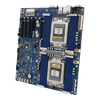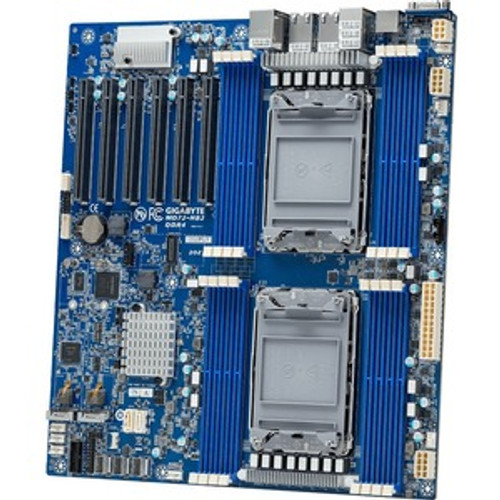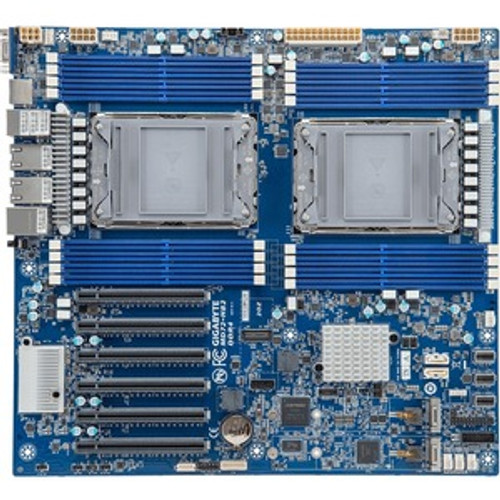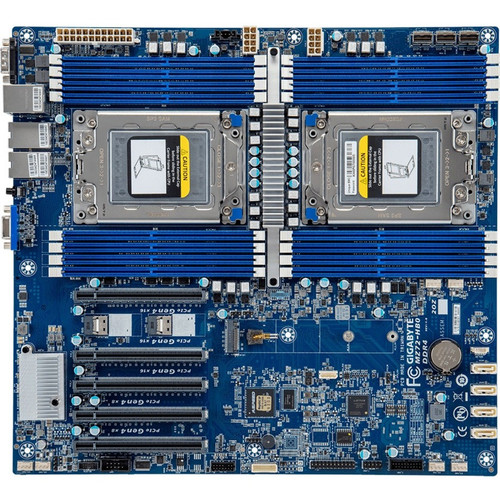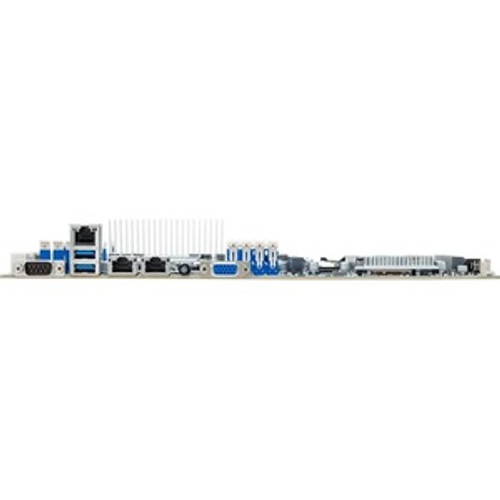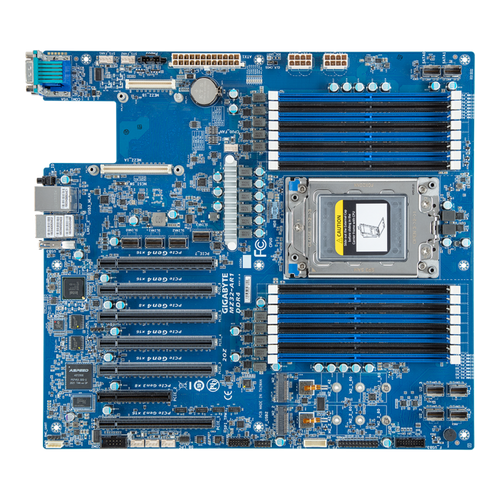Product Description
- AMD EPYC™ 7003 processors with AMD 3D V-Cache™ Technology
- AMD EPYC™ 7003 series processor family
- 8-Channel RDIMM/LRDIMM DDR4 per processor, 16 x DIMMs
- 2 x 10Gb/s BASE-T LAN ports (Broadcom® BCM57416)
- 1 x Dedicated management port
- 4 x 7-pin SATA 6Gb/s ports
- 3 x SlimSAS (with 12 x SATA 6Gb/s or 3 x NVMe PCIe Gen4 x4) ports
- 2 x SlimSAS (with 2 x NVMe PCIe Gen4 x4) ports
- 1 x Ultra-Fast M.2 with PCIe Gen4 x4 bandwidth
- Up to 5 x PCIe Gen4 slots
Nothing Stacks Up To EPYC™
AMD EPYC™ 7003 Processors with AMD 3D V-Cache™
AMD EPYC 7003 Series Processors with AMD 3D V-Cache™ technology are raising the bar once more for breakthrough performance on targeted technical computing workloads like Electronic Design Automation, Computational Fluid Dynamics, and Finite Element Analysis software and solutions. Delivering breakthrough performance per core and performance per watt, the Zen 3 architecture maintains leadership in number of cores – up to 64, amount of L3 cache – 768MB, and 128 PCIe 4.0 lanes, while maintaining socket compatibility with existing 3rd Gen AMD EPYC platforms.
Zen 3Architecture
768MBL3 Cache Per Socket
Up To 64“ZEN 3” Cores
128PCIe 4.0 Lanes
MZ72-HB2 Product Overview
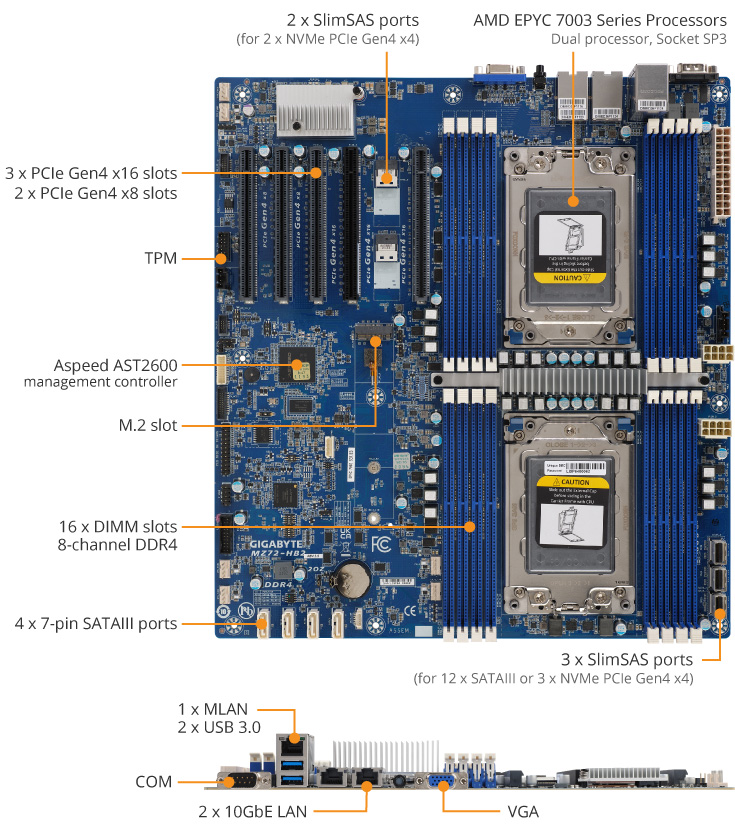
MZ72-HB2 Motherboard Block Diagram

Hardware Security
Optional TPM 2.0 Module
For hardware-based authentication, the passwords, encryption keys, and digital certificates are stored in a TPM module to prevent unwanted users from gaining access to your data. GIGABYTE TPM modules come in either a Serial Peripheral Interface (SPI) or low pin count (LPC) interface.

Value-added Management
GIGABYTE offers free-of-charge management applications via a specialized small processor built on the server.
GIGABYTE Management Console
For management and maintenance of a server or a small cluster, users can use the GIGABYTE Management Console, which is pre-installed on each server. Once the servers are running, IT staff can perform real-time health monitoring and management on each server through the browser-based graphical user interface. In addition, the GIGABYTE Management Console also provides:
- Support for standard IPMI specifications that allows users to integrate services into a single platform through an open interface
- Automatic event recording, which can record system behavior 30 seconds before an event occurs, making it easier to determine subsequent actions
- Integrate SAS/SATA/NVMe devices and RAID controller firmware into GIGABYTE Management Console to monitor and control Broadcom® MegaRAID adapters.
GIGABYTE Server Management (GSM)
GSM is a software suite that can manage clusters of servers simultaneously over the internet. GSM can be run on all GIGABYTE servers and has support for Windows and Linux. GSM can be downloaded from GIGABYTE website and complies with IPMI and Redfish standards. GSM includes a complete range of system management functions that includes the following utilities:
- GSM Server: A software program that provides real-time, remote control using a graphical user interface through an administrator’s computer or through a server in the cluster. The software allows ease of maintenance for large clusters of servers.
- GSM CLI: A command-line interface for monitoring and managing remotely.
- GSM Agent: A software program installed on each GIGABYTE server node that retrieves information from each system and devices through the OS, and this software integrates with GSM Server or GSM CLI.
- GSM Mobile: A mobile app for both Android and iOS that provides admins with real-time system information.
- GSM Plugin: An application program interface that allows users to use VMware vCenter for real-time monitoring and management of server clusters.
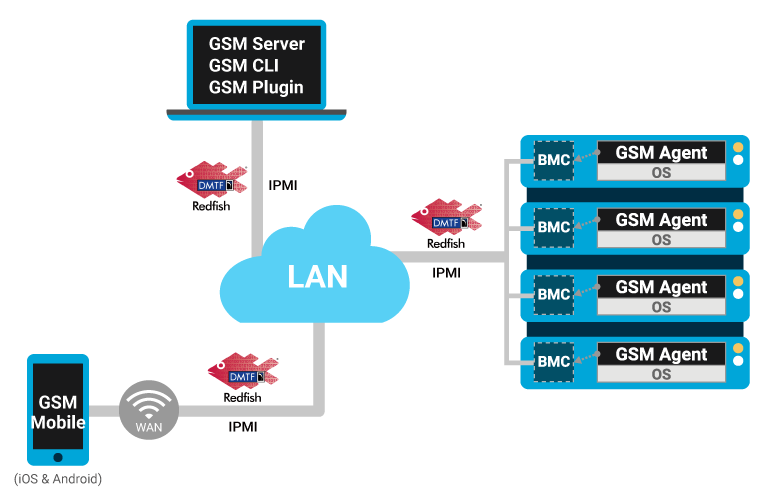
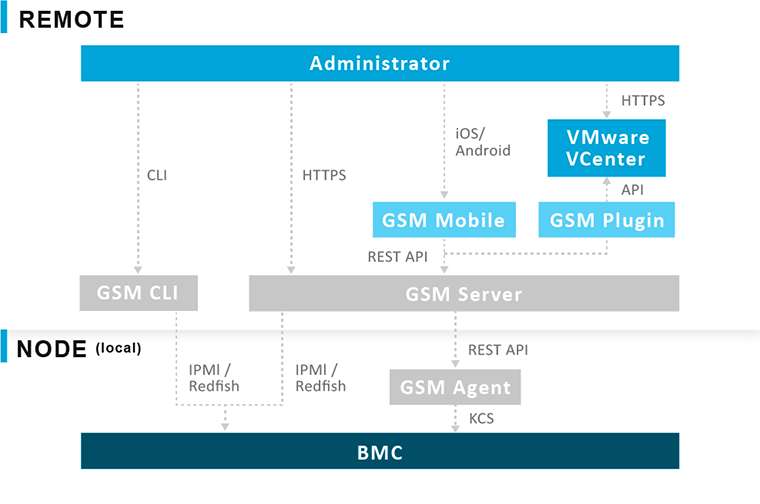
 US Dollars
US Dollars
 United Arab Emirates Dirham
United Arab Emirates Dirham
 Euro
Euro
 British Pound
British Pound
 Turkish Lira
Turkish Lira
 Canadian Dollar
Canadian Dollar
 South African Rand
South African Rand
 Indian Rupee
Indian Rupee
 Brazilian Real
Brazilian Real
 Indonesian Rupiah
Indonesian Rupiah
 Singapore Dollar
Singapore Dollar
 South Korean Won
South Korean Won
 Japanese Yen
Japanese Yen
 Chinese Yuan
Chinese Yuan
 Mexican Peso
Mexican Peso
 Qatari Rial
Qatari Rial
 Saudi Riyal
Saudi Riyal






